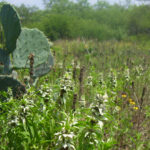From Seed to Community: Building a Thriving Community Garden
The idea of a community garden is a beautiful one: a shared space where neighbors come together, grow food, and build connections. But starting a community garden can seem daunting. Where do you begin? How do you organize it? Don’t worry, fellow green thumbs! This post will guide you through the process, step-by-step, to help you create a thriving community garden.
- Gather Your Green Team:
Form a Committee: Start by gathering a small group of passionate individuals who are willing to dedicate time and energy to the project. Diversity in skills and experience is key!
Define Your Vision: What kind of community garden do you envision? Will it focus on food production, education, or simply a place for relaxation and connection?
Get Community Buy-In: Spread the word! Host meetings, share information online, and get feedback from potential participants. The more people involved, the stronger your community garden will be.
- Find the Perfect Spot:
Location, Location, Location: Look for a sunny, accessible spot with good soil and water access. Consider proximity to schools, community centers, or public spaces.
Secure Permission: Obtain permission from the landowner or governing body for the use of the space. Be sure to clarify responsibilities and expectations.
Assess the Site: Evaluate the soil, drainage, and sunlight conditions. This will help you determine the best crops to grow and any necessary soil amendments.
- Planning and Design:
Plot It Out: Create a plan for the garden layout, including pathways, raised beds, and planting areas. Consider accessibility for people with disabilities.
Choose Your Crops: Select plants that are well-suited to your climate and soil conditions. Consider a variety of vegetables, herbs, and flowers to attract pollinators.
Decide on Management: Will the garden be managed by a committee, volunteers, or a combination of both? Establish clear guidelines for maintenance, harvesting, and sharing.
- Building and Planting:
Gather Supplies: Purchase or collect materials for raised beds, fencing, tools, and seeds. Consider holding fundraising events or seeking donations.
Get Your Hands Dirty: Start building! Involve the community in the construction process. It’s a great way to foster a sense of ownership.
Plant with Purpose: Choose a planting calendar that aligns with your local climate. Consider staggering planting dates to ensure a continuous harvest.
- Nurturing and Sharing:
Cultivate Community: Organize regular workdays, potlucks, or educational workshops. These events create opportunities for connection and learning.
Harvest the Bounty: Establish a system for sharing the harvest. This could involve a community market, donation to local food banks, or a rotating schedule for picking.
Celebrate Success: Recognize the hard work and dedication of everyone involved. Host a harvest festival or community meal to celebrate the fruits (and vegetables!) of your labor.
Remember: Building a community garden is a journey, not a destination. Be patient, embrace challenges, and celebrate the growth of your garden and your community!




